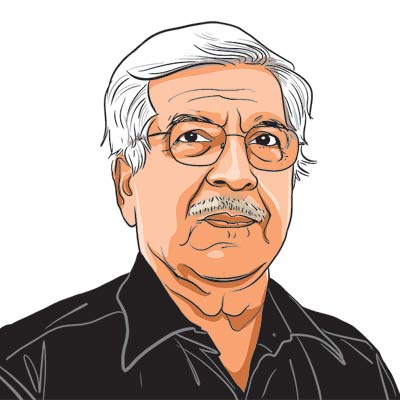Opinion Reconstructing the future
The Eighties of the last century was a period in which most of the ideas which are reconstructing Twenty First Century India were pushed by Rajiv Gandhi.
The Eighties of the last century was a period in which most of the ideas which are reconstructing Twenty First Century India were pushed by Rajiv Gandhi. It becomes difficult for a highly hierarchal intelligentsia,removed from societal realities and linked in more senses than apparent with superficial globalization,to have the strength to recognize that large countries can come to terms with the world on terms which they have to fashion themselves and then negotiate and the PM did well to raise the issue of effectiveness of governance in different regimes.
Rajivs questioning began with the acceptance that in the so called strategy of walking on two legs,the decentralization Gandhian leg was tottering. Reconstruction,therefore started with the concept of empowering the village with political power. Here the issue was not only the architecture which was important since the basic issues related to man,health,education,nutrition and land. There were both issues of local level governance,local district,agro-climatic region,State and Centre and most important on resources and responsibilities. An extensive system of consultation was organized.
The method was to get into it with an initial vision and design and to keep on reinventing as the process of consultation widened and gave back responses. Some issues were hived off to expert groups like the GVK Rao Committee. The most complex problems related to the power structures and the relationships between the community organizations and local bodies.
The exercise was an act of faith. If the structures provided for power to the people then through time they would prevail.During one of these consultations,I was told that some monies sent directly to the village level by the Planning Commission were used by the local leader to buy a horse. My response was that may be the horse was needed and if not I hoped he would be voted out sooner than later.
As compared to this the issues on the economic reform movement were simple. The direction was to start with domestic reform and prepare in a few years for global reform. Critics were people like Meghnad Desai,the IMF Rodericks Subramaniam paper and the economists who worked with Narasimha Rao. They were controverted by well documented analysis by scholars like Arvind Panagriya and others.
The wisdom of harmonizing and phasing reform,for example,by setting relative tariff rates in inter related clusters of industries to take care of the so called negative protection and by abolishing quantitative import control by using long term marginal cost principles were later appreciated. The abolition of domestic price control and quantitative restrictions was fast. The experience is now seen as a wise reform process.
The most important area was India and the rest of the world and there was great churning of reinventing leadership in G-77 through the concept of concentric circles of influence with a major emphasis on South Asia,then West Asia and Africa and the globe.
In all of this the establishment was always unhappy. Yet the leadership had the long vision while deconstructing the existing policies and building up the future.
It still remains a moot question if more decentralized systems for example committees or groups of ministers are more effective as compared to the systems which were more centrally driven and yet allowed extensive participation? A part of the compulsion could arise from the requirements of coalition politics.
Also as the nation gains strength there may be something to be said for greater levels of decentralization. In fact some of the critics of decentralization may possibly be getting old.
On balance my own belief is that non trivial statements of future vision are strategically important for developing operational policies but I am realistic and trained and experienced enough to accept that may be an alternative view is required. Debates of fundamentals are however needed side stepped as they are by media unable to go beyond the two minute byte.





